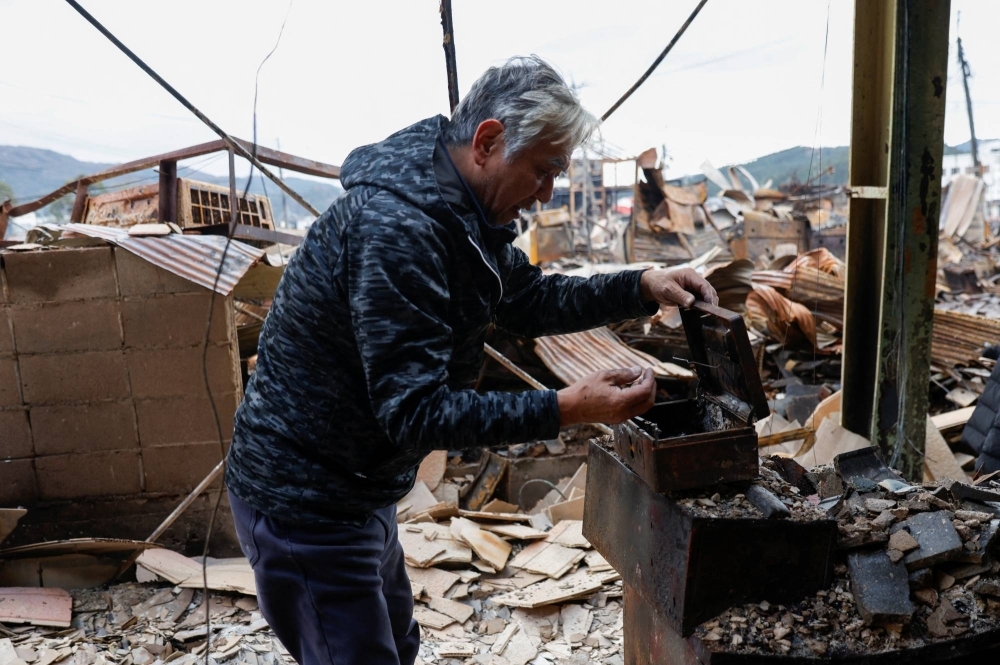BY YUKANA INOUE AND GABRIELE NINIVAGGI
STAFF WRITERS
Jan 4, 2024
Over 72 hours after a powerful earthquake hit the Sea of Japan coast on New Year's Day, killing at least 84 people in Ishikawa Prefecture and injuring hundreds, authorities are intensifying their efforts to rescue those trapped under collapsed buildings.
Amid the threat of aftershocks and unfavorable weather conditions — with heavy rains and low temperatures aggravating an already dire situation — the window for rescue efforts is closing quickly. Survival rates drop significantly after the first 72 hours.
In Wajima, the area hit hardest by the quake, dozens of people are still reported to be buried under collapsed buildings.
As of 8 a.m. on Thursday, level 1 or higher earthquakes on the Japanese intensity scale have been detected in the area 592 times. According to the Meteorological Agency, rain and snow are expected on Thursday as well as between Saturday and Monday in the area. This might lead to landslides where the ground is loose as a result of the continuing quakes.
Ishikawa Prefecture has released a list of 79 missing people as of 2 p.m. on Thursday, which include residents of Wajima, Suzu and Anamizu. They are continuing to update the list as more people are confirmed missing.
Residents stand in a line to receive food from a volunteer group in Wajima on Thursday. | REUTERS
Prime Minister Fumio Kishida told reporters Thursday morning that, in the past four days, 156 people had been rescued, and that, as of 9 a.m, the police had received 138 requests for help. Eighty cases had already been addressed by that hour and the remaining 58 will be tackled appropriately, he added.
“I strongly feel that the national and local governments, as well as business operators and citizens, must unite to confront this national crisis,” Kishida said, calling the earthquake “the biggest natural disaster of the Reiwa era.”
One person is reported to be missing from the port of Suzu after a tsunami hit the area on Monday.
Over 320 people have been injured in Ishikawa alone, reports say, with a total of over 60 such cases in the neighboring prefectures of Toyama and Niigata as well.
Authorities are still assessing the full extent of the damage to buildings and homes in the area, especially in the cities where the impact of the quake was most severe. But as of Wednesday afternoon, over 200 houses in Ishikawa were confirmed to be entirely or partially demolished.
In neighboring prefectures, 420 homes in Niigata and 57 in Toyama have been confirmed to be damaged as well.
As of 1 p.m. Thursday, 34,554 people had evacuated their homes to seek shelter in 407 evacuation centers located across the three prefectures of Ishikawa, Toyama and Niigata, disaster prevention minister Yoshifumi Matsumura told reporters Thursday.
Around 33,000 people have evacuated their homes and are seeking shelter in 355 evacuation centers in Ishikawa.
Rescue workers search for survivors under collapsed houses in Suzu, Ishikawa Prefecture, on Thursday. | KYODO
Thousands of houses across the area are still experiencing power and water shortages, as Self-Defense Forces personnel continue to distribute water in tankers.
Authorities have managed to increase the supply of aid to affected areas amid a gradual recovery in road conditions. The government is continuing to ramp up efforts to further clear the road to Wajima and Suzu in order to deliver more supplies.
Delivering supplies via the sea is also in the works at six ports across Ishikawa, with water distribution by the coast guard in Nanano port having started on Wednesday afternoon. A large vessel stocked with supplies and water is en route to the Noto area from Kyushu, and is expected to arrive by Friday afternoon.
Rescue operations have been hampered by the geographical remoteness of the municipalities which bore the brunt of the disaster — all located on the Noto Peninsula in eastern Ishikawa — as access by land is limited and capsized ships have impeded the establishment of a sea route.
In a news conference Thursday afternoon, Kishida said that the land route for large-scale trucks between Wajima and Suzu had finally opened by 2 p.m. that day.
A man takes out a mattress and other belongings from his collapsed house in Suzu on Thursday. | KYODO
The government will increase the number of SDF personnel involved in rescue operations from the current 2000 to 4600 and send further manpower to support local municipalities, Kishida said. Basic necessities such as food, blankets and portable toilets have been flowing to the evacuation centers.
The area of the Noto Peninsula has experienced strong seismic activity in the past few years, with a magnitude 6 quake having hit the same area last May, killing one and injuring 44.
Experts have said that the seismic activity in the fault that stretches under the Noto Peninsula for 150 kilometers is expected to continue for the time being.
Amid urgent efforts to assess the damage, there have been multiple reports of people spreading false information regarding the quake on social media platforms, prompting the government to issue a warning on Wednesday.
Asked about his plans to visit the area, Kishida said he will carefully consider the timing for a visit, after thoroughly understanding the situation on the ground.
He added that early next week, the government will officially devote reserve funds in the order of ¥3 billion to ¥4 billion ($20-28 million) to the area, an amount close to double what the central government allocated to Kumamoto following an earthquake in 2016 and the response to the torrential floods which hit Kyushu in 2020.




Ulasan
Catat Ulasan